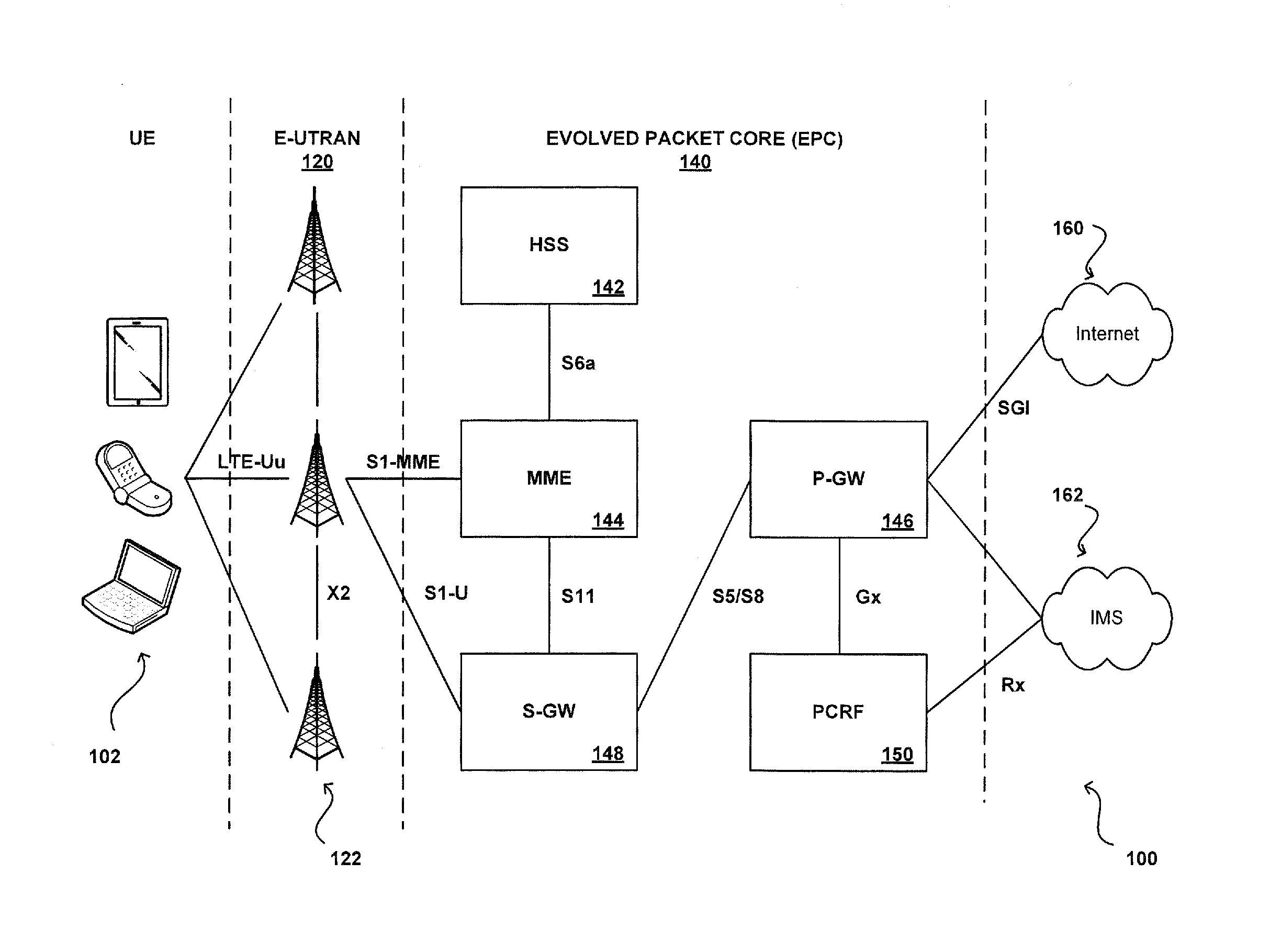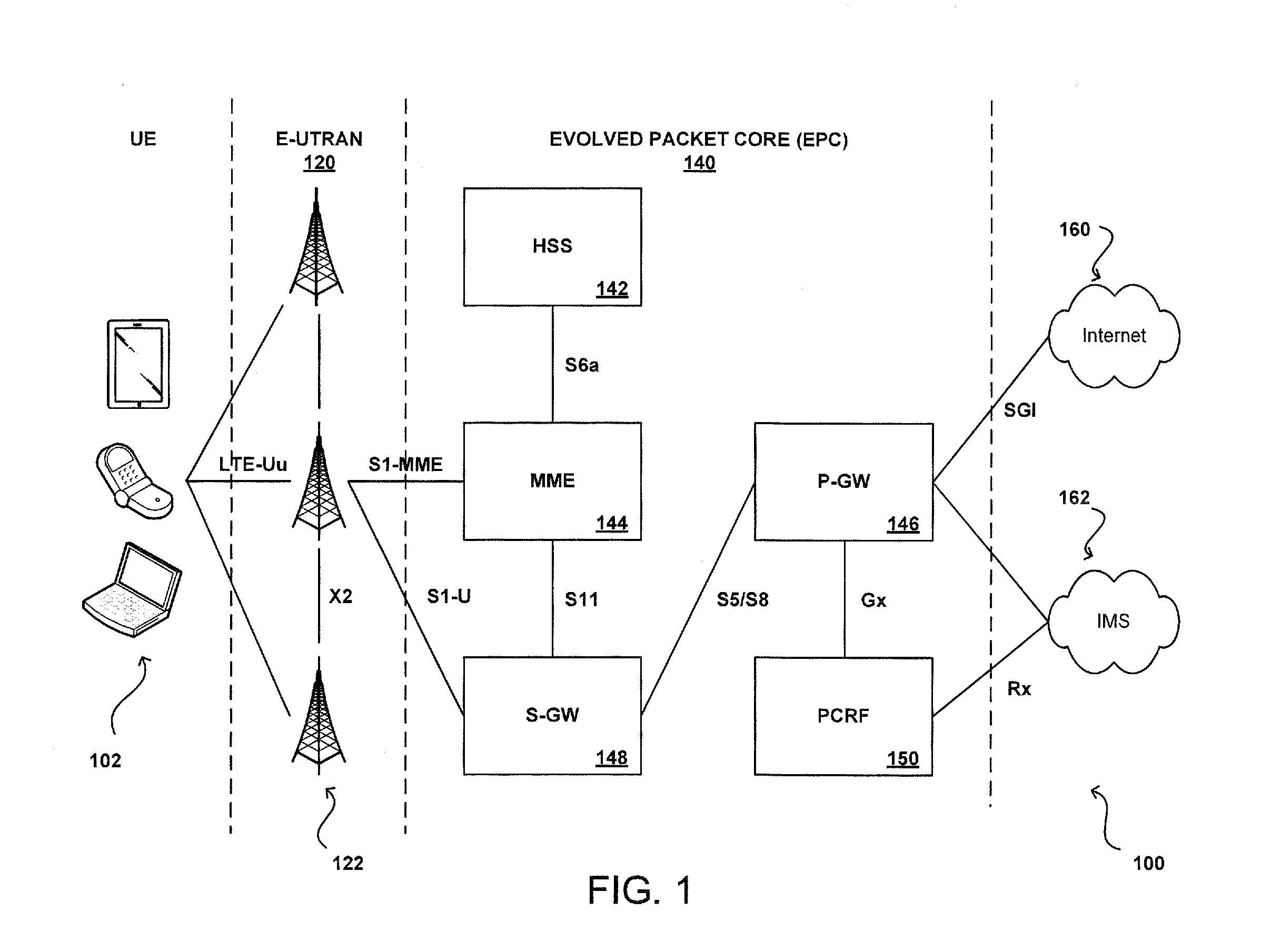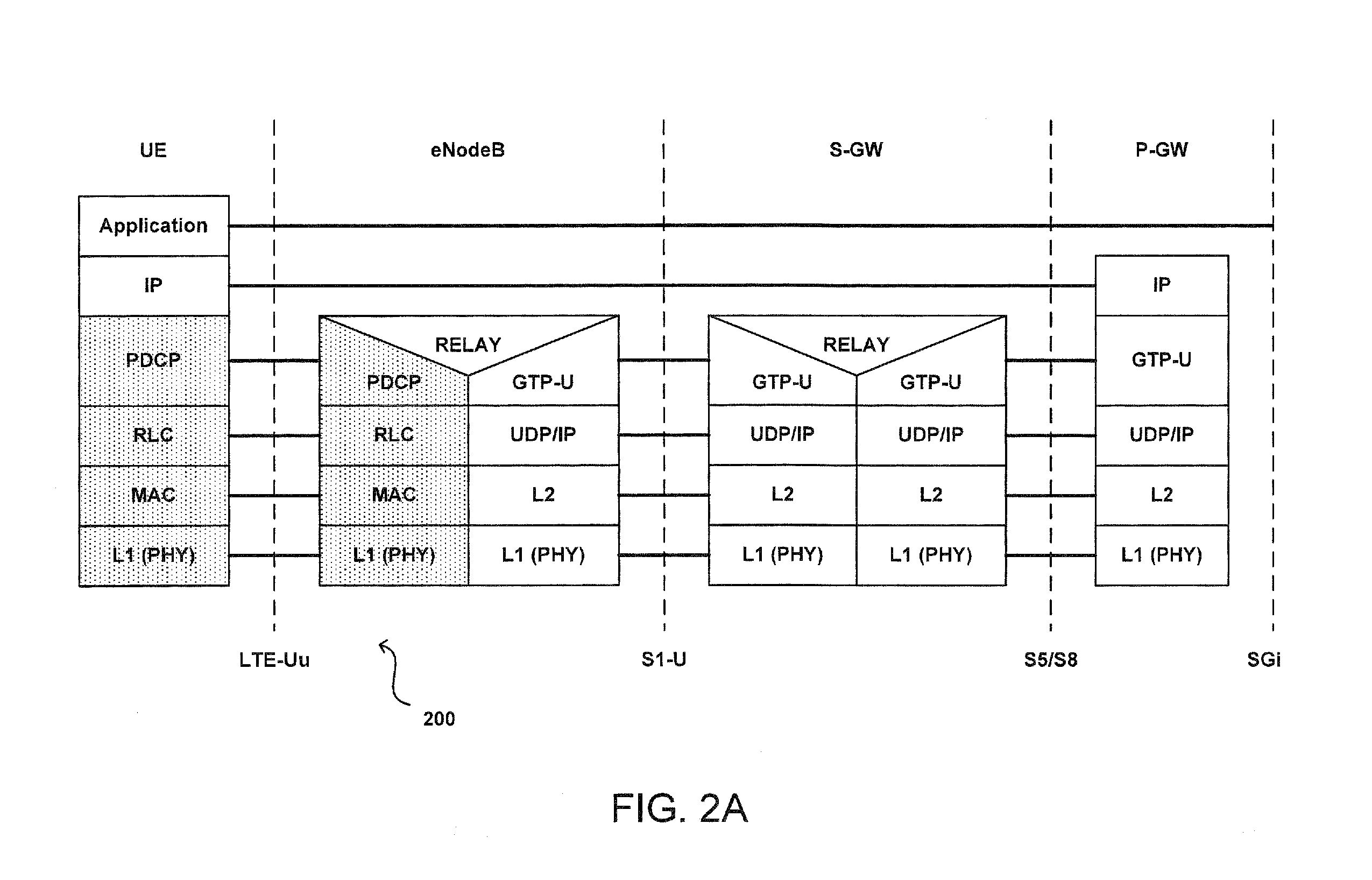Techniques for optimizing propagation of multiple types of data
a technology propagation techniques, applied in the field of multiple types of data propagation optimization techniques, can solve problems such as providing less than optimal experiences for users
- Summary
- Abstract
- Description
- Claims
- Application Information
AI Technical Summary
Benefits of technology
Problems solved by technology
Method used
Image
Examples
Embodiment Construction
[0011]In wireless data communication, the transceiver of the computing device uses significant amounts of power for radio frequency (RF) transceiving, analog-to-digital and digital-to-analog conversion, wideband signal processing, among other functions. As mobile networks are expected to support higher data rates and bandwidths, and consumers increasingly demand smaller, lighter computing devices (and concomitantly, smaller, lighter batteries), power saving is becoming more and more critical for such devices. A conventional power saving approach is discontinuous reception (DRX) and / or discontinuous transmission (DTX). DRX / DTX aims to reduce power usage by turning off the transceiver (or a transmitter and receiver in certain embodiments) used for wireless communication for as long as possible, and turning on the transceiver for short periods of time to receive and / or transmit data. The benefits of DRX / DTX may not be realized, however, when a device is used to send data of disparate p...
PUM
 Login to View More
Login to View More Abstract
Description
Claims
Application Information
 Login to View More
Login to View More - R&D
- Intellectual Property
- Life Sciences
- Materials
- Tech Scout
- Unparalleled Data Quality
- Higher Quality Content
- 60% Fewer Hallucinations
Browse by: Latest US Patents, China's latest patents, Technical Efficacy Thesaurus, Application Domain, Technology Topic, Popular Technical Reports.
© 2025 PatSnap. All rights reserved.Legal|Privacy policy|Modern Slavery Act Transparency Statement|Sitemap|About US| Contact US: help@patsnap.com



